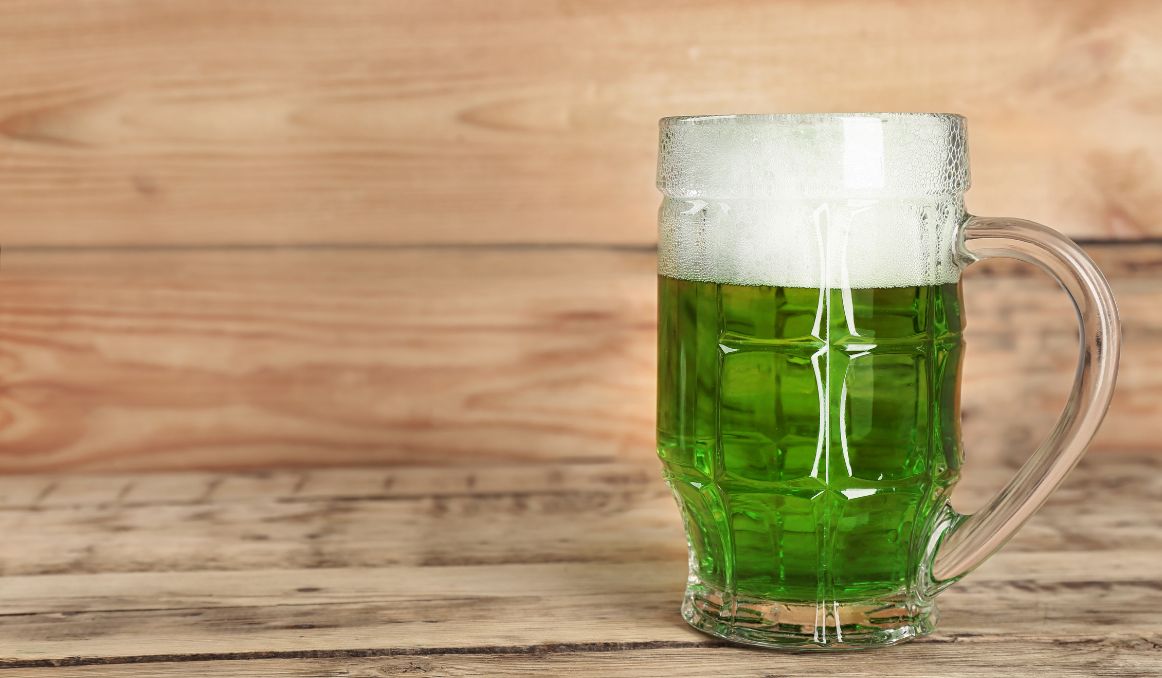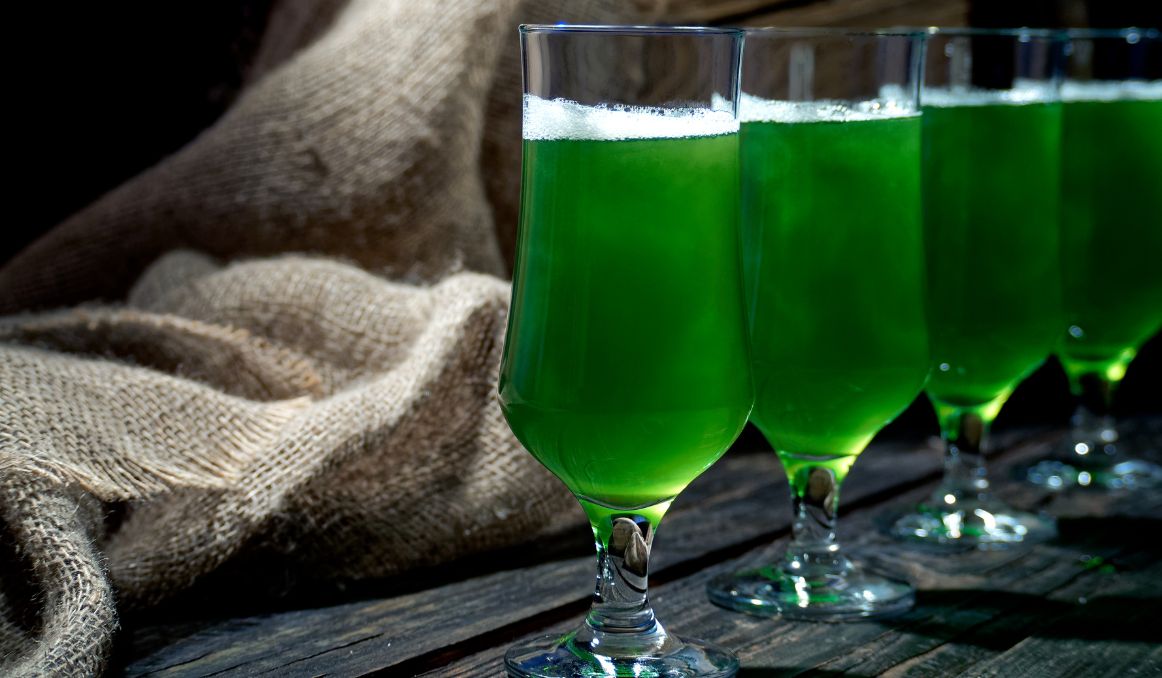How to Make Green Beer Without Food Coloring
If you’ve been wondering how to make green beer without food coloring, you’re in good company.
Every year on St. Patrick’s Day, beer drinkers around the US head out for a traditional green beer. The tradition is a long lasting one, more than a century old now, and it has taken over the much older “green beer,” a term that was used in reference to beer that was not fully fermented, or “green.”
When beer is not quite done fermenting, still “green,” it is rich with acetaldehyde, which is an off flavor that can result in stomach problems when ingested. Fortunately, today’s brewers allow for both primary and secondary fermentation, which allows the yeast to get in and mop up any off flavors that may be present.
So what is this other “green beer?”

Why Make Green Beer?
At the turn of the century, many bars began offering green beer, beer literally dyed with blue food coloring to make the beer turn green, in order to celebrate the Irish holiday of St. Patrick’s Day.
The first person of note to do so was a physician, Professor Thomas H. Curtin, who dyed the beer for his buddies at his clubhouse. This green beer was served beginning in 1914, but there is evidence that others were doing it even before that, with bars and pubs celebrating green beer to celebrate the Irish patriots in America.
The drink took off, though not too quickly, and ultimately became more of an American tradition than an Irish one, with newer visitors from Ireland still in the dark and tasting it for the first time once they arrive and celebrate their first St. Patrick’s Day.
The beer has long been made with blue food coloring, and sometimes with yellows and greens added in for various changes in tone, but today, much is being made about food coloring in beer, and you are likely to find numerous warnings against drinking green beer made with food coloring.
What’s Wrong with Food Coloring?
The science is in, and it looks like most food colorings out there are really bad for human consumption.
First, artificial food coloring, while still deemed “safe” for human consumption, has been linked to all kinds of health problems, including but not limited to hyperactivity, allergic reactions, and even tumor growth.
Second, some green beer contains some of the worst food dyes out there, including Blue #1, Blue #2, Green #3, Yellow #5, and Yellow #6. These food dyes have been linked to kidney tumors, bladder problems, and behavioral health issues with kids.
Last, food dyes are not absorbed well by the body, and they can infect your intestines, leaving a green mess along the way.
If you are interested in making green beer, you can absolutely do so without artificial food dyes.
How to Make Green Beer Without Food Coloring
You have options! There are many ways to make green beer without food coloring that are not only not harmful to you and your fellow beer drinkers but are actually good for you!

Wheat Grass
One favorite way to make green beer is with wheat grass.
Wheat grass will give you the closest color you’ll get to food coloring. The beer will be a bright green, with the head tinted as well, and it won’t make the beer cloudy.
In terms of flavor, wheat grass tastes exactly as you think it will, grassy. You won’t be adding much, so it won’t overpower your beer. Just be mindful that you will certainly be noting hints of grass in your beer.
Wheat grass is a health food, and comes with many benefits including vitamins and minerals. It is known to aid digestion, so the opposite of that food coloring, and you can pick up a shot at your local juice bar.
To make beer with wheat grass, simply add a tablespoon to the bottom of your beer glass and then pour your beer on top. Add in small amounts of wheat grass, a little at a time, until you get the desired color.
Spirulina
Spirulina will provide the strongest flavor to your beer, but fortunately you don’t need to add much, and if you’re drinking a strong beer, you might not even notice it. Just be mindful to add only a little bit as it goes a long way, in terms of color and taste.
Spirulina is a type of blue-green algae that is packed with protein and highly beneficial to your health in terms of anti-cancer properties. It also tastes super fishy.
Regardless of the color of your beer originally, spirulina will turn your beer a dark, hunter green.
You can pick it up either in your health food store or you can order it online.
To make green beer with spirulina, add ½ teaspoon to the bottom of your beer glass and pour a small amount of beer into the glass. Whisk until the powder is completely dissolved, then pour the rest of your beer.
Matcha
If you’re looking for the least impact on flavor, and don’t mind a bit of an off green, try matcha powder. It is also the easiest to find these days with everyone on a matcha green tea kick.
Matcha is a power packed, green tea powder that is healthy for you in so many ways and comes highly recommended by most functional medicine doctors.
It will turn your beer an olive green, and you will likely not taste it at all.
You can pick up matcha powder in the tea aisle of pretty much any market.
Matcha contains a ton of antioxidants and the tea is known as a detoxifier, so you can feel good about drinking your green beer!
To make green beer with matcha, simply add 1 teaspoon to your beer glass and add in a bit of beer. Whisk until completely dissolved, which may take a while, and then add in the rest of your beer.
Cheers!
Passionate about the beer and/or wine making process? So are we! If you’re interested in finding out how you can use our technology to control fermentation and monitor your yeast, save work hours and improve the cost-efficiency of your business, drop us a line at [email protected] or check out our product pages:
- Oculyze BB 2.0 (Better Brewing) Yeast Cell Counter App + Hardware
- Oculyze FW (Fermentation Wine) Yeast Cell Counter App + Hardware
Also, you can now get access to a fully functional demo account to test your yeast via our Web App. Completely free of charge and with no commitment to purchase.
Sources:


